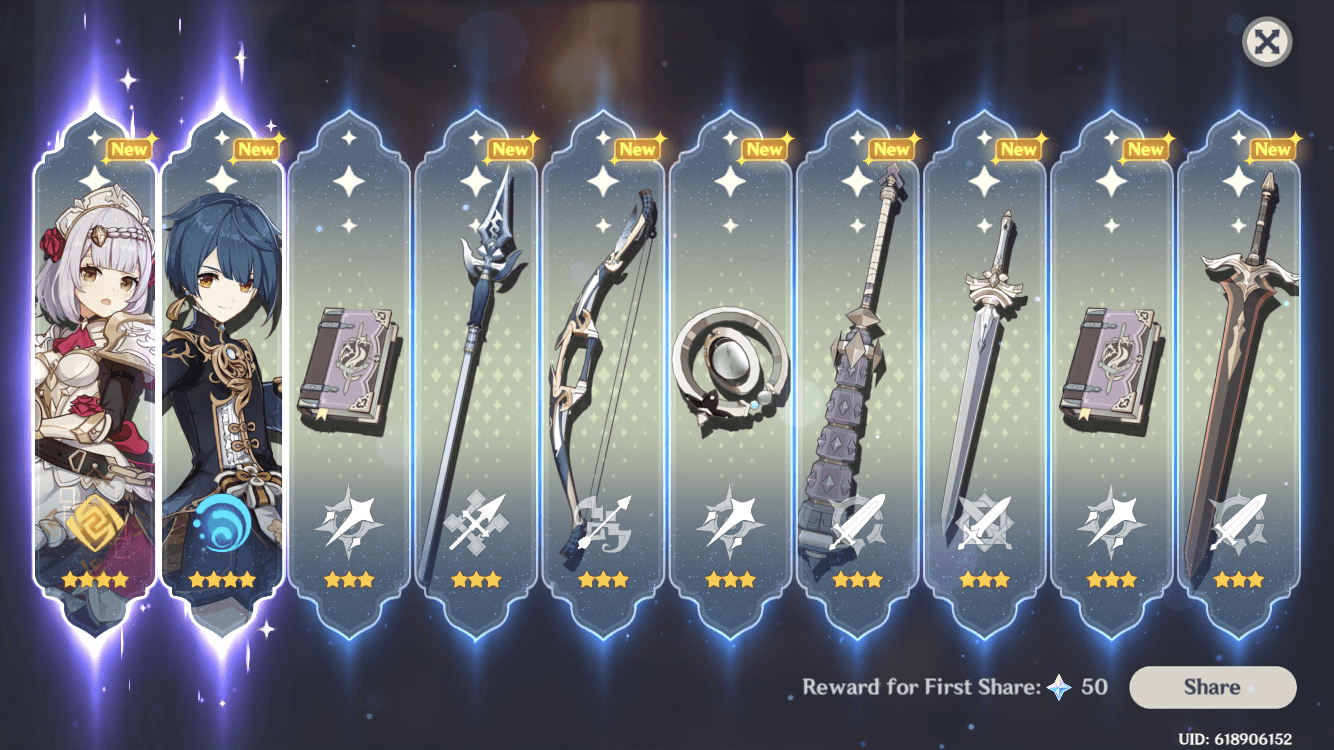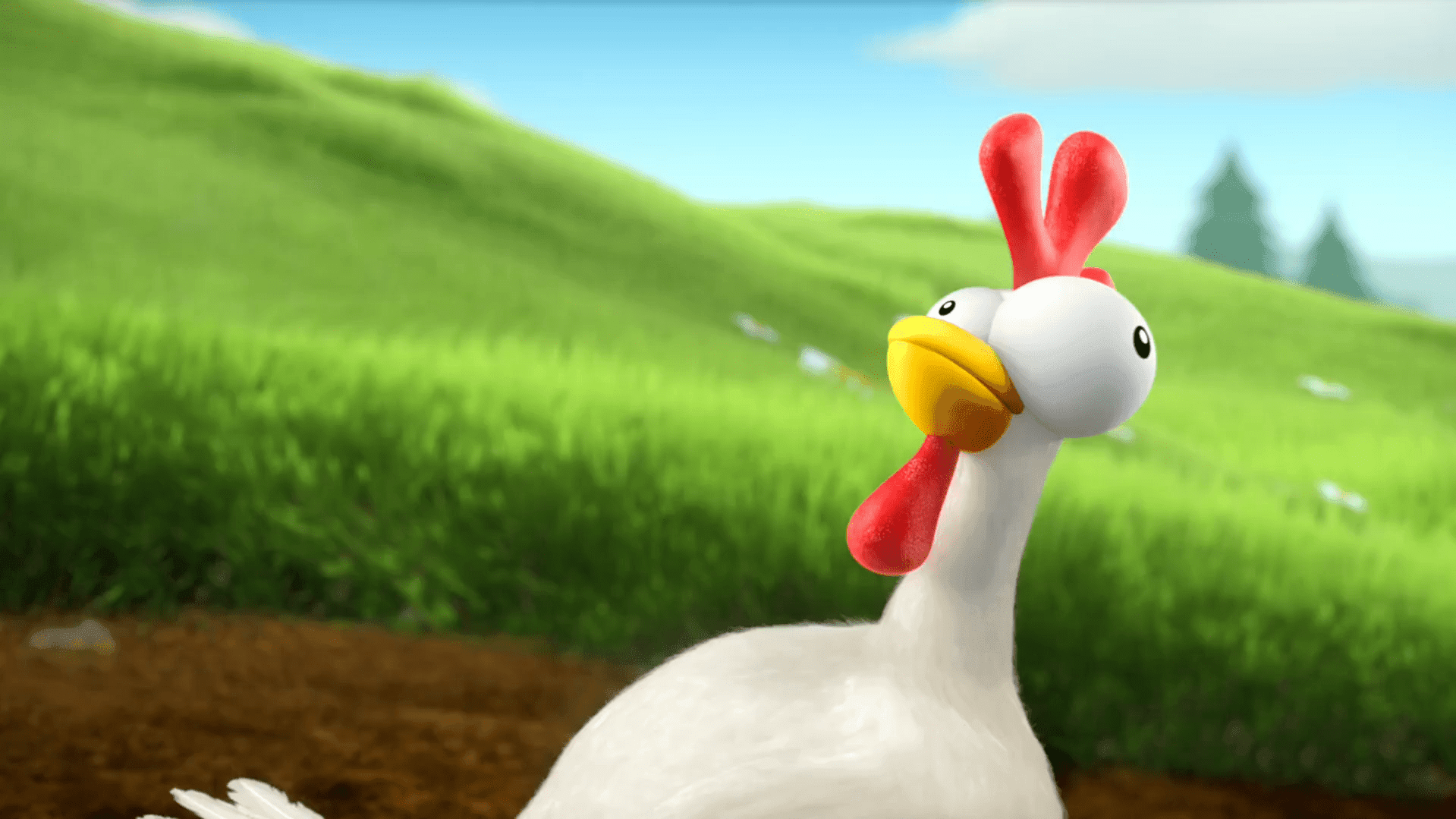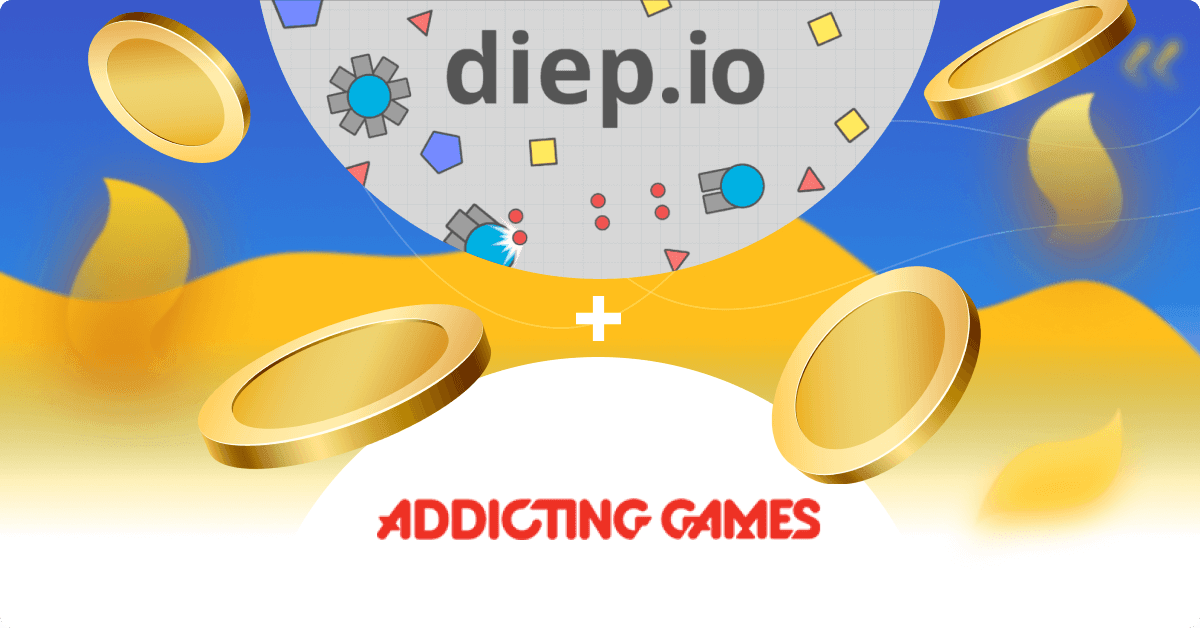Let’s talk about something controversial – the gacha system in mobile games.
Some players love it, and some hate it. Some developers make it enjoyable, and some make it, well, predatory.
However, one thing is for sure – the gacha system can be a valuable monetization strategy for mobile games and can boost IAP monetization.
In this article, you will learn about the gacha system itself, its types, pros, and cons. I’m also bringing you implementation tips & examples from gacha games that make a lot of money out of it.

Why Is It Called Gacha?
There is no talking about the gacha system without diving into its origin first.
The term gacha comes from Japan and derives from the word Gachapon. This word stands for toy vending machine capsules.
Okay, but what do vending machines have to do with mobile gaming?
The randomness factor.
When someone tosses a coin into this vending machine, they don’t know what they will win. Kids all over Japan are spending their precious yen coins to get these surprise toy capsules.
In gaming, rolling for toys is replaced by – rolling for in-game assets. For example, characters or currency.
This concept first started appearing in video games. For example, in Monster Rancher from 1997, The Legend of Zelda: Oracle of Age from 2001, etc.
However, it wasn’t until 2010 until the gacha system first appeared in a mobile game.
What Was the First Gacha Game?
The first gacha game was called Dragon Collection. It was a card battler released on a Japanese mobile first-social network called GREE. The game became a huge success, and soon after, other mobile games followed.
Japan is where the story of gacha games started, and it’s also where it’s still most popular. In the Japanese market, almost all 200 top-grossing games include some kind of gacha (Think With Google).
Besides its home country, gacha is also one of the most popular monetization strategies in the whole Asian mobile game market.
What Is a Gacha Game?
A gacha game is a game where players use pulling, rolling, or spinning to get a random reward. To do this, players usually need to use hard or soft in-game currency.
The rewards are random, but not completely.
How Does Gacha Work?
Each gacha comes with its own drop rates – the odds of getting a particular item or character. For the rarest, most valuable rewards in the game, these odds are the smallest.
Most importantly, the players can’t win these items or characters any other way than from the gacha. Since some characters and items are rare, players will need to roll the gacha multiple times before getting the ones they desire most.
Naturally, this can take a while.
If the players want to roll the gacha more frequently, they can do it by purchasing in-game currency.
The gacha system suits certain mobile game genres better than others. For example, it frequently appears in role-playing games. These games revolve around characters, and with gacha, players can usually summon or upgrade them.

Gacha System vs. Loot Boxes
Gacha is often linked to another popular mobile game feature – loot boxes.
Loot boxes are in-game boxes or chests that provide players with randomized rewards. For example, items, skins, currency.
Sounds identical to gacha?
It’s not. Let me explain.
Both gachas and loot boxes bring players randomized items of different rarity levels. Also, both of them require fuel to get them going – either in-game currency or real money.
Essentially, all gachas are loot boxes. However, not all loot boxes are gachas.
Here’s what I mean by that.
A gacha is a loot box that is the primary source of items a player needs in a game. In other words, gacha is always the main monetization mechanic in these games. For this reason, games with this mechanic are frequently called a genre of their own – gacha games.
On the other hand, loot boxes are just a complementary monetization feature. The items players can receive from loot boxes can also be obtained in different ways, e.g., making in-app purchases.

Types of Gacha Systems in Mobile Games
Gachas don’t come in one shape and size.
All gachas run on the same base principle. However, some types of gacha grant players better odds, others bring them bulk rewards, etc.
Let’s go over different types of gacha that appear in mobile games.
Kompu (Complete) Gacha
In a complete gacha, players need to collect a set of gacha items. Once they complete the set, they can finally turn it into a rare and valuable item.
As a result of this, the players’ chances of winning rare items are incredibly low.
For this reason, this type of gacha is very controversial. In 2012, it was proclaimed illegal to use in Japan.
When this happened, game developers started coming up with new and innovative ways to incorporate gacha into their games.
Step-up Gacha
Every time players roll the gacha, their chances of winning a rare item increase. For example, the gacha can guarantee players a rare item after their tenth pull.
As such, the step-up gacha is most popular with big spenders. The more they roll the gacha, the stakes become higher and higher, keeping them spending.
Box (Package) Gacha
This is a box that contains certain gacha items with disclosed odds. In this type of gacha, the reward pool is limited.
Every time players pull an item from the box, fewer items remain in it. Just like when you take a piece of candy from a candy box. Therefore, the chances of winning a rare item increase with every pull.
Thanks to these traits, this type of gacha is generally considered fairer than the others.
Consecutive Gacha
In consecutive gacha, players have better chances of getting rare rewards if they spend in-game currency in bulk.
For example, a game can offer players single rolls and five rolls a row. To attract players to make consecutive rolls, they usually come at a discount (cost less currency). After players make the rolls, they receive all the items they won at once.
Sugoroku Gacha
This type of gacha got its name after a Japanese board game, and it works like one as well.
In this type of gacha, players need to move a character across a board that consists of squares. Each of these squares brings players a certain prize. The further the squares, the better the prizes.
Every time the players roll the gacha, they will stumble upon a game of luck. For example, roll a dice or spin a wheel. Hence, luck determines how far their characters will go.
Open vs. Closed Gacha
In an open gacha, players know the exact odds of winning rare items. In a closed gacha, players don’t know what their chances are.
Some countries even made open gacha obligatory. For example, in China, game developers are obliged to state drop rates for items in gacha games.

What Makes Gacha Games So Appealing?
Gacha games can be very, very addictive.
This is both their biggest benefit and their biggest drawback.
What makes them so addictive?
To explain the appeal of gacha, we need to dive into gameplay psychology.
The most luring part of the gacha system comes from the excitement it causes. When some players roll a gacha, they experience a thrill and an adrenaline rush. These emotions could be compared to scratching a lottery ticket, opening a gift, or gambling.
When players are collecting resources to use gacha, they experience anticipation. As they wait to see what they will receive, they feel tension. Finally, when the results are disclosed, players can sense release. It’s a powerful rollercoaster of emotions that makes players come back for more.
Collecting Game Characters
Gachas fulfill another deeply rooted human need – collecting and completing things. In other words, many players don’t spend on gacha based on the character or item usage in the game, but because they want to grow and complete their collection.
Some games, like Genshin Impact, don’t require players to obtain the highest-ranked characters to play and complete the game, but players still pull a lot of gacha. Such games put focus on the collecting aspect of gacha.
There’s another reason why obtaining a rare game character through gacha is appealing to players – they get to know different types of characters.
Oftentimes, players get more info about a character once they pull it. It’s the character’s personality, looks, backstory, aspirations, and relationship with other characters that players are the most interested in. This is also why players tend to form emotional connections with them.
Thus, once new gacha characters are announced, some players are ready to pull thousands of times not only to get that character but to get to know more about them.
This is another big reason why gacha works well and why exclusive game characters are the perfect reward.
Considering all of this, it comes as no surprise that gacha games are as popular and successful as they are.
How Gacha Mechanics Influence Engagement
You might think developers utilize gacha mechanics only to make players purchase more. That’s certainly the one of the main goals, but it’s not

Gacha System Controversy
The gacha system is frequently criticized for being gambling in disguise.
And just like gambling, it’s said to be addictive and dangerous.
There are horror stories of children and grown-ups spending huge amounts of money on gacha games.
For example, in 2018, a man spent $70,000 playing Fate/Grand Order. When this came out in public, the man said, “Some people spend $18 on a movie and feel moved. I’ve spent $70,000 on Fate/Grand Order. But it moves me.”
The majority of people don’t feel as positive about spending a lot of money on gacha. In most cases, they feel like these games lured them into spending, and they regret doing so.
In 2020, a popular Youtuber, Mtashed, spent $7,200 playing Genshin Impact. Afterward, he gave up promoting the gacha system and said some nasty things about it.
There have been a lot of complaints and requests to prevent cases like these.
For this reason, in some countries, the gacha system made it to legislation. While some countries require to make the drop rates public, others have banned certain gacha practices.

Gacha System: Best Practices
Despite the controversies surrounding them, gacha games are still very popular and profitable.
If you’re thinking about incorporating a gacha system into your game, it’s important to do it right.
Here are a couple of tips to help you with this.
Utilize Content to Achieve Depth
Your gacha should constantly give players new reasons to engage with it.
To achieve this goal, you need to ensure the gacha system has enough depth. The depth of your gacha heavily affects retention and player spending.
One of the key things that impact gacha depth is the amount of content it delivers.
Content is the base the gacha drops need to work with. For example, a game with 1000 characters can offer more depth than the one with 50 characters.
However, it’s not just the quantity that matters here.
It is also desirable to deliver diverse gacha content. For example, you can include abilities, perks, weapons, cosmetics, and other items as gacha rewards. All of these can add depth to the progression system.
The thing is, players usually focus on upgrading their favorite characters only. With diverse gacha content, you can make them engage with more aspects of the game.
The gacha system also allows you to continuously add new content.
For example, you can add new gacha content every time players reach a certain level, a milestone achievement, etc.
You can also create time-limited gachas. Why not make a Christmas or Thanksgiving-themed gacha? Many games link gachas to in-game events, real-life seasons, etc.
Make Sure Each Item Has Value
In most cases, gacha systems generate value through rarity.
In other words, they offer rare, valuable rewards to motivate players to keep rolling gacha.
For example, the players may have their eyes set on a rare, five-star weapon. These players will need to buy a whole lot of gacha packs before getting the thing they desire.
What about all those rewards in between? Are they completely worthless?
They shouldn’t be. If players don’t win something rare in the gacha, they should still find some value in them.
One of the possible outcomes of gacha rolls is duplicates. This result can be utterly disappointing or a desirable win. It all depends on how the developer handles the situation.
There are two common ways developers design duplicate mechanics.
One of them is turning duplicates into dust. Whenever players win something unwanted, a duplicate, or something else, you can allow them to – destroy it. In other words, they can turn these items into dust or discard currency.
This makes gacha less frustrating and gives these items a whole new purpose and value.
The other way to do this is making duplicates a progress tool. In this scenario, players can fuse duplicates with the items they already own. By doing this, they upgrade these items.
This approach makes duplicates a desirable win, and each drop feels rewarding.
Pace Your Gacha
Want to have control over how long your gacha lasts? Watch out for its pacing.
When it comes to pacing the gacha system, game designers typically use these methods:
- Pacing how frequently players can roll the gacha
- Pacing how many drops the gacha generates
If your game has a high amount of content, players should be able to roll the gacha frequently. You can also offer multiple drops at the same time. The same goes for games that use duplicates as a progress tool.
On the other hand, if your content levels are lower, you need to create some limits. For example, you can tie gacha rolls to passing levels and winning currency. Also, it would be best to limit the gacha drops to one drop at a time.
All of this depends on the pace your in-game economy can support.
The more the players roll the gacha, the faster they will speed through the game’s content. If you cannot afford this to happen, slow things down.
Examples of Successful Gacha Games
As I’ve mentioned earlier, the gacha system most frequently appears in RPG games.
For this reason, I’m bringing you examples of two different RPG games with two different gacha setups.
Let’s see what we can learn from each.
Fire Emblem: Heroes
This turn-based RPG by Nintendo is a part of a popular, long-running franchise.
Just like in the whole Fire Emblem series, the gameplay revolves around heroes. The core of the game consists of battling, earning rewards, and collecting/upgrading heroes.
In order to collect heroes, players need to summon them with the help of gacha.
To summon a random hero, players use the in-game currency called orbs. This currency can be earned in-game. Of course, it can also be bought in the in-game store.

Gacha Setup
When players get to the place where they can summon heroes, they face a couple of choices.
Players can choose if they will summon one or multiple heroes.
If players decide to summon multiple heroes from the same selection, they get a discount.
For example, if they summon five heroes, the cost per hero goes down from five to three orbs. This way, the game incentivizes players to choose multiple rolls (consecutive gacha).
Besides this, players can choose the type of hero they want to summon.
The heroes are divided into several color-coded brackets (stones). These colors represent different types of heroes.
Thanks to this, players have some control over the gacha. They know which type of hero they need at the moment, and they have the power to pick it out.
What happens after the summon?
The players are presented with a random character, ranging from one to five stars. Obviously, the higher the rating, the more valuable the hero.
The Pace
As I mentioned earlier, players can earn the orbs they need to roll the gacha by playing.
For example, playing a single-player mission will bring them one orb. When players first start playing, they quickly progress and earn enough orbs to roll the gacha frequently.
With time, this gets more difficult.
After playing for a while, the difficulty of single-player missions quickly increases. Consequently, the rate of collecting orbs slows down. Hence, players can’t access the gacha as frequently as before.
This is done for a reason – getting the players to spend. This is the only way they will be able to summon heroes more often.

Gacha Content & Drop Rates
Fire Emblem’s gacha pool consists of a large number of characters – more than 700 of them.
As I’ve mentioned before, the characters differ by their types (color), but also by their star rating.
For this reason, the drop rates in the game depend on both of these things.
For example, if players hope for a red type five-star hero, the drop rates are not the same as for the green type five-star hero.
According to Siliconera, in this game, the average drop rates for rare units are from 6% to 8%. If you’re interested in their exact rates, you can check them out here.
This game has an open gacha, so all of this is displayed in-game.
To improve the players’ odds, Fire Emblem: Heroes features a guarantee system. The chances of pulling a five-star hero increase with every roll. It’s not a major increase, though. Every five rolls a player doesn’t get one, their chances increase by 0.25% (Fire Emblem: Heroes Fandom).
Wondering how the game handles duplicates? Pretty well, actually.
The game presents players with more than one option.
The first one is to merge duplicates to enhance their heroes. Players will decide on this if they like a character and plan to use them a lot.
The second one is to “send them home”. This is done when players find a character invaluable. When players do this, these heroes turn into feathers. The feathers work as the game’s dust currency. With it, the players can make their heroes more powerful and rarer.
Genshin Impact Gacha
When MihoYo released Genshin Impact in 2020, this game instantly became a huge success. Mobile gamers all around the world went crazy about this RPG action game.
This is mainly thanks to the game’s stunning AAA game design and quality. At the same time, the game got a lot of criticism for its controversial gacha system.
In order to progress in Genshin Impact, players need to:
- Complete quests
- Fight enemies, collect characters, items, and resources
- Upgrade characters and equipment, unlock new features
All of this is tied to the game’s innovative gacha system, so let’s analyze it.

Gacha in Genshin Impact
In Genshin Impact, the code name for gacha is a wish.
In order to make a wish, players first need to trade in-game currencies. To start with, they need to have enough currency called Primogems. They can then exchange this currency for the ones they can actually use to roll the gacha. These are:
- Intertwined Fate (for limited-time gachas based on events)
- Acquaint Fate (for standard gacha)
How can players acquire these currencies?
There are three options – increasing their account level, playing the game’s battle pass, or making purchases.
Once players have enough of fate currencies, they can roll the gacha for wishes and win new characters or weapons.
Players can choose to roll for a single wish or ten at the time (consecutive gacha type).
If they decide to roll in bulk, the game guarantees at least one high-level item. This way, the game motivates players to choose the consecutive roll.
The Pace
Different players perceive this game quite differently.
Casual players don’t mind the game’s gacha mechanics and believe there is no need to spend money on the game at all.
Hardcore players, on the other hand, are more eager to progress. For these players, it is crucial to roll the gacha frequently.
The problem is, the game doesn’t allow players to roll very frequently.
For example, the game guarantees players they will get the desired characters/weapon after 90 pulls. The players have calculated that this would take nine months by playing the game for free.
Obviously, this is a seriously long period. The only way to make things faster is by making in-app purchases.
I’m not going to sugarcoat it.
In this game, players are basically forced to make IAPs if they want to progress at a reasonable rate. Hence, the gacha pacing is considered problematic for a good reason.

Gacha Drop Rates in Genshin Impact
This game is most famous for its drop rates, and not in a positive way.
From the game’s gacha system, players can earn characters or weapons ranging from one to five stars. Of course, the players hope to win five-star items.
The problem?
This happens super rarely.
This game’s base drop rate for a five-star character is a slim 0.6% (Genshin Impact Fandom).
To help improve the odds, Genshin Impact provides so-called pity pulls. This means that if players have been unlucky for a long time, the game will randomly give them a good reward.
With all of this taken into account, the average drop rate for five-star items is 1.6% (Genshin Impact Fandom). This is significantly less than in other popular gacha games.
On the bright side, this game comes with a worked-out duplicate system. Whenever players get a character/weapon duplicate, they can fuse it with the same unit to strengthen it. This way, no item goes to waste.
Gacha Games: Final Thoughts
As you can see, getting gacha games right is not an easy task. There is a lot of balancing between the desire to earn and player satisfaction.
Hopefully, this article helped you understand what makes a good gacha system.
What are your thoughts on this? Leave a comment and let us know!







Comments